Country
Operator Image

Crash of a Boeing 737-2F9 in Kaduna: 11 killed
Date & Time:
Nov 13, 1995 at 0853 LT
Registration:
5N-AUA
Survivors:
Yes
Schedule:
Yola – Jos – Kaduna – Lagos
MSN:
22985
YOM:
1982
Flight number:
WT357
Crew on board:
14
Crew fatalities:
Pax on board:
124
Pax fatalities:
Other fatalities:
Total fatalities:
11
Aircraft flight hours:
22375
Aircraft flight cycles:
27567
Circumstances:
Nigeria Airways flight WT357 departed Yola (YOL) at 07:00 en route to Lagos (LOS). Intermediate stops were planned at Jos (JOS) and Kaduna (KAD). The Boeing 737 landed at Jos at 07:40 and departed fifty minutes later. The flight to Kaduna was uneventful. Kaduna ATC gave the aircraft an inbound clearance with no delay for a locator approach to runway 05. Though, the initial landing clearance was for runway 05, the captain requested to land on runway 23. He was reminded by the controller that the wind was from 090 magnetic, but he still insisted on using the 23 approach. At 08:42, the aircraft commenced its initial descent at 48 miles on the ILS/DME to 4,500 ft. At 08:49 UTC, it was cleared to 3,500 ft at 10 miles out and was later descended to 500 ft. The aircraft turned left from the track 310 to align with runway 23 and the aircraft was still in the turn when the threshold was sighted just 1.5 miles to the left of the aircraft. The first officer asked the captain "Can you make it to land from that position?". The observer in the jump seat also suggested going on the downwind, presumably to re-position the aircraft for landing on runway 05. There was no response at all from the captain and the approach was continued for runway 23. The left turn was very steep and it took the aircraft to the left of the runway centreline and a right correction was applied. The observer shouted "Watch the wing" as the wings could have struck the ground on the final approach. By this time, the aircraft crossed the threshold with the flying pilot still struggling to maintain directional control for runway centreline alignment. The aircraft touched down 7820 feet down the runway, leaving just 2020 ft (615.85 m) of runway length. The captain was reported to have used 1.8 and 1.6 EPR on the reversers. When a runway overrun became inevitable, the captain turned the aircraft to the left with the intention to take advantage of the last rapid exit intersection to avoid the runway end lights. At this juncture, the aircraft entered an uncontrollable skid. The right wing hit the ground, thus rupturing the fuel tanks and a huge fire erupted. The aircraft was destroyed by the fire.
Probable cause:
The probable cause of the accident is the continuation of a highly unstabilized approach when the option of a missed approach could have been taken. The contributing factor was the turn off at 76 knots into the high speed intersection when an overrun into the extended runway end should have been maintained.
Crash of a Boeing 707-3F9C in Kiri Kasama: 3 killed
Date & Time:
Dec 19, 1994 at 1906 LT
Registration:
5N-ABK
Survivors:
No
Schedule:
Jeddah - Kano
MSN:
20669
YOM:
1972
Flight number:
WT9805
Crew on board:
3
Crew fatalities:
Pax on board:
2
Pax fatalities:
Other fatalities:
Total fatalities:
3
Aircraft flight hours:
31477
Circumstances:
The aircraft was on a cargo flight from Jeddah (JED) to Kano (KAN). The total cargo uplift was 35 tonnes packed in 13 pallets and some loose bundles of merchandise that were loaded in the lower cargo hold. The departure from Jeddah was delayed for thirteen hours because of problems starting the n°4 engine. The Boeing 707 departed at 13:48 UTC. As the aircraft approached N'Djamena at FL350, about 17:00 UTC, the flight engineer noted a strange smell in the cockpit. The ground engineer and the loadmaster who were sitting in the cargo compartment area of the aircraft confirmed that the smell had persisted for a while around them. It appeared that the area around pallet number 11 was misty. The pallet was sprayed with a fire extinguisher and the smoke evacuation procedure was carried out. This stopped the fumes temporarily. The aircraft was now halfway between N'Djamena and Kano with about 40 minutes flight time to go. At 18:00 the flight was cleared to descend. Then the Master Warning sounded, followed one minute later by a Fire Warning. Smoke entered the cabin. A descent was initiated with a descent rate close to 3,000 feet per minute. Later the pitch trims became ineffective before the aircraft crashed into marshland. Tire ground marks at the scene of the accident indicated that the aircraft must have descended very slowly into the elephant grass and may have somersaulted on contact with the water, then exploded and disintegrated along the wreckage trail. Both loadmasters were killed as well as one crew member. Both other occupants were injured.
Probable cause:
The probable cause of this accident was a heat generating substance that was hidden in a cargo of fabrics inside pallet n°11 in the cargo compartment of the aircraft. The heat that emanated from the pallet resulted in smoke that caused a major distraction in the cockpit and later caused an explosion which seriously impaired the flight controls of the aircraft.
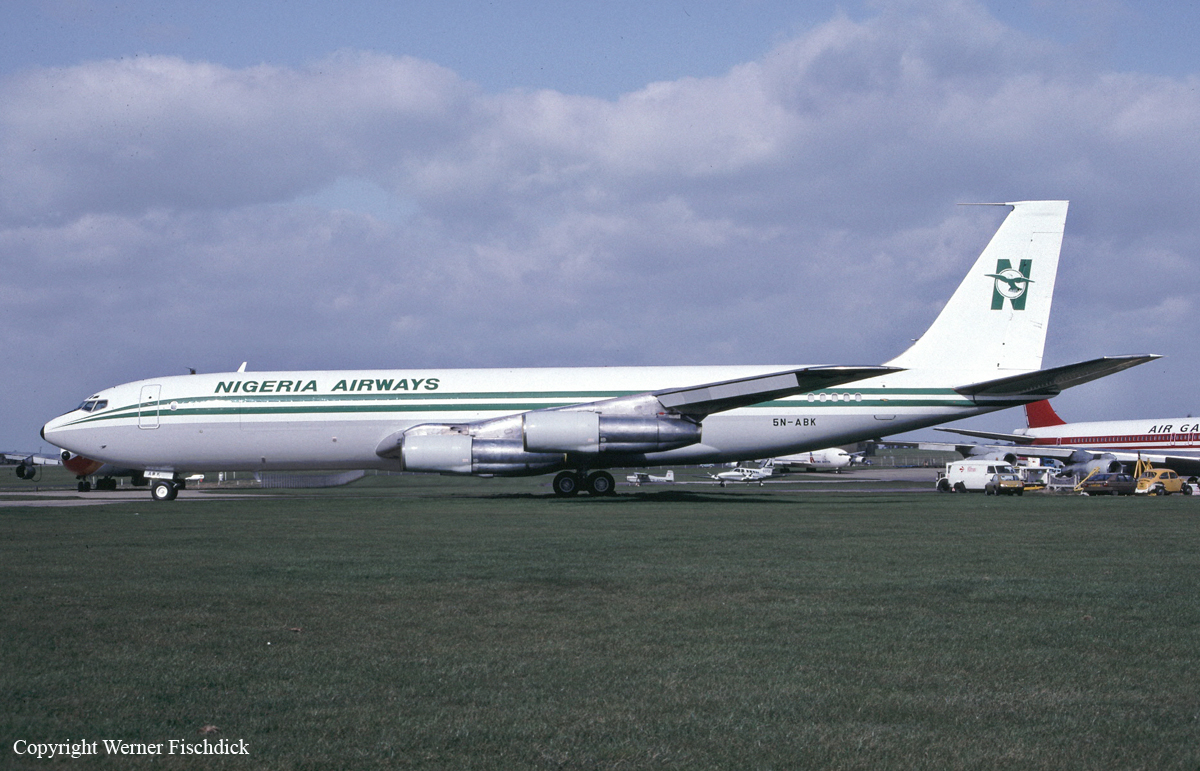
Crash of a Douglas DC-8-61 in Jeddah: 261 killed
Date & Time:
Jul 11, 1991 at 0838 LT
Registration:
C-GMXQ
Survivors:
No
Schedule:
Jeddah - Sokoto
MSN:
45982
YOM:
1968
Flight number:
WT2120
Crew on board:
14
Crew fatalities:
Pax on board:
247
Pax fatalities:
Other fatalities:
Total fatalities:
261
Aircraft flight hours:
49318
Aircraft flight cycles:
30173
Circumstances:
A McDonnell Douglas DC-8-61 passenger plane, registered C-GMXQ was destroyed in an accident near Jeddah-King Abdulaziz International Airport (JED), Saudi Arabia. All 261 on board were killed. The DC-8 jetliner was owned by Canadian airline Nationair which operated the plane on behalf of Nigeria Airways to fly hajj pilgrims between Nigeria and Saudi Arabia. Nigeria Airways flight 2120 took off from Jeddah's runway 34L at 08:28, bound for Sokoto (SKO), Nigeria. About 15 seconds after brake release an oscillating sound was heard in the cockpit. Within two seconds, the flight engineer said: "What's that?" The first officer replied: "We gotta flat tire, you figure?" Two seconds later, an oscillating sound was again heard. The captain asked the first officer: "You're not leaning on the brakes, eh?" The first officer responded: "No, I 'm not, I got my feet on the bottom of the rudder." By this time, the aircraft had accelerated to about 80 knots. Marks on the runway showed that the No.1 wheel started to break up at about this time. In addition, the left and right flanges of No.2 wheel began to trace on the runway; rubber deposit from No.2 tire continued which appeared to be from a deflated tire between the flanges. At 28 seconds after brake release, a speed of 90 knots was called by the captain and acknowledged by the first officer. The captain called V1 about 45 seconds after brake release. Two seconds later, the first officer noted "sort of a shimmy like if you're riding on one of those ah thingamajigs." The captain called "rotate" 51 seconds after brake release and the airplane lifted off the runway. Witnesses noticed flames in the area of the left main landing gear. The flames disappeared when the undercarriage was retracted. During the next three minutes several indications of system anomalies occurred, which included a pressurization system failure, a gear unsafe light and a loss of hydraulics. The captain requested a level-off at 2000 feet because of the pressurization problem. In his radio call the captain used the callsign "Nationair 2120" instead of "Nigerian 2120" and the controller mistook the transmission to be from a Saudi flight returning to Jeddah and cleared The Jeddah bound aircraft to 3000 feet. The captain of the accident aircraft, however, acknowledged the ATC transmission without a call sign, saying "understand you want us up to 3000 feet." This misunderstanding continued for the next three minutes with ATC assuming that all calls were from the Saudi flight, not from the accident aircraft. About four minutes after brake release the captain called ATC and reported that the aircraft was leveling at 3000 feet. The first officer then interrupted with " ... declaring an emergency. We 're declaring an emergency at this time. We believe we have ah, blown tires." As the aircraft continued on the downwind heading, a flight attendant came into the cockpit and reported "smoke in the back ... real bad." A few moments later, the first officer said "I've got no ailerons." The captain responded: "OK, hang on, I've got it." It was the last record on the CVR, which failed (along with the flight data recorder [FDR]) at 08:33:33. The ATC controller gave a heading to intercept the final approach and thereafter continued to give heading information. Meanwhile, during the downwind and base legs, the fire had consumed the cabin floor above the wheel wells , permitting cabin furnishing to sag into the wheel wells. When the gear was probably extended at 11 miles on the final approach, the first body fell out because fire had burned through the seat harness. Subsequently, with the gear down and a forceful air supply through the open gear doors, rapid destruction of more floor structure permitted the loss of more bodies and seat assemblies. Despite the considerable destruction to the airframe, the aircraft appeared to be controllable. Eight minutes after brake release and 10 miles from the runway, the captain declared an emergency for the third time, saying, "Nigeria 2120 declaring an emergency, we are on fire, we are on fire, we are returning to base immediately." The aircraft came in nose down and crashed 9,433 feet (2,875 meters) short of the runway at 08:38.
Probable cause:
The following findings were reported:
1. The organisational structure for the deployment team was ill-defined and fragmented.
2. Deployment maintenance personnel were not qualified or authorised to perform the function of releasing the aircraft as being fit to fly.
3. The release of the aircraft as being fit to fly was delegated to non-practising Aircraft Maintenance Engineers whose primary function was to operate the aircraft as flight crew members.
4. The aircraft was signed-off as fit for flight, in an unairworthy condition, by the operating flight engineer who had no involvement in the aircraft servicing.
5. The #2 and #4 tyre pressures were below the minimum for flight dispatch. Other tyres may also have been below minimum pressures.
6. Maintenance personnel were aware of the low tyre pressures but failed to rectify the faults.
7. The mechanic altered the only record of the actual low pressures, measured by the avionics specialist on 7 July, four days before the accident.
8. There was no evidence that the tyre pressures had been checked, using a tyre pressure gauge, after 7 July.
9. The lead mechanic was aware of the low tyre pressures.
10. The persons who were aware of the low pressures had insufficient knowledge of the hazards of operating at low tyre pressures.
11. The project manager was aware of a low tyre pressure but was not qualified to assess its importance.
12. The project manager was responsible for the aircraft schedule and directed that the aircraft depart without servicing the tyre.
13. The lead mechanic who was aware of the requirement for, and had requested nitrogen for tyre servicing, did not countermand the decision of the project manager.
14. There was no evidence to indicate that this flight crew were ever informed of the low tyre pressures.
15. The aircraft departed the ramp in an unairworthy condition.
16. During the taxi from the ramp to the runway, the transfer of the load from the under-inflated #2 tyre to #1 tyre on the same axle, resulted in over deflection, over-heating and structural weakening of the #1 tyre.
17. The #1 tyre failed very early on the take-off roll due to degeneration of the structure, caused by over-deflection.
18. The #2 tyre failed almost immediately after #1 due to over-deflection and rapid overheating when the load was transferred from the #1 tyre.
19. The #2 wheel stopped rotating for reasons not established. Friction between the wheel/brake assembly and the runway generated sufficient heat to raise the temperature of tyre remnants above that required for a tyre fire to be self-sustaining. Rubber remnants ignited during the take-off roll.
20. Numbers 1 and 2 wheels were severely damaged and at least one piece of #1 wheel rim struck the airframe, becoming embedded in the left flap.
21. The crew were aware of unusual symptoms early and throughout the takeoff roll; the captain continued the take-off.
22. The aircraft was not equipped with warning systems which would have provided the flight crew with adequate information on which to make a decision to reject the take-off after tyre(s) failure.
23. The captain did not receive sufficient cues to convince him that a rejected take-off was warranted.
24. The crew retracted the gear, consistent with company procedures, and burning rubber was brought into close proximity with hydraulic and electrical system components.
25. The evidence indicates that the wheel well fire involved tyres, hydraulic fluid, magnesium alloy and fuel. The fuel was probably introduced as a result of "burn through" of the centre fuel tank.
26. Fire within the wheel wells spread and intensified until the cabin floor was breached and control systems were disabled.
27. The fuel increased the intensity of the fire until, shortly before impact, airframe structural integrity was lost.
28. Tyre characteristics and performance are not adequately addressed during training and licensing of both flight crews and technical personnel.
29. The aircraft operator's tyre inflation pressures did not accurately reflect what was contained in the aircraft manufacturer's maintenance manual.
30. The operator's maintenance and operating documentation for the DC-8 does not contain adequate information for the proper maintenance and operation of aircraft tyres.
1. The organisational structure for the deployment team was ill-defined and fragmented.
2. Deployment maintenance personnel were not qualified or authorised to perform the function of releasing the aircraft as being fit to fly.
3. The release of the aircraft as being fit to fly was delegated to non-practising Aircraft Maintenance Engineers whose primary function was to operate the aircraft as flight crew members.
4. The aircraft was signed-off as fit for flight, in an unairworthy condition, by the operating flight engineer who had no involvement in the aircraft servicing.
5. The #2 and #4 tyre pressures were below the minimum for flight dispatch. Other tyres may also have been below minimum pressures.
6. Maintenance personnel were aware of the low tyre pressures but failed to rectify the faults.
7. The mechanic altered the only record of the actual low pressures, measured by the avionics specialist on 7 July, four days before the accident.
8. There was no evidence that the tyre pressures had been checked, using a tyre pressure gauge, after 7 July.
9. The lead mechanic was aware of the low tyre pressures.
10. The persons who were aware of the low pressures had insufficient knowledge of the hazards of operating at low tyre pressures.
11. The project manager was aware of a low tyre pressure but was not qualified to assess its importance.
12. The project manager was responsible for the aircraft schedule and directed that the aircraft depart without servicing the tyre.
13. The lead mechanic who was aware of the requirement for, and had requested nitrogen for tyre servicing, did not countermand the decision of the project manager.
14. There was no evidence to indicate that this flight crew were ever informed of the low tyre pressures.
15. The aircraft departed the ramp in an unairworthy condition.
16. During the taxi from the ramp to the runway, the transfer of the load from the under-inflated #2 tyre to #1 tyre on the same axle, resulted in over deflection, over-heating and structural weakening of the #1 tyre.
17. The #1 tyre failed very early on the take-off roll due to degeneration of the structure, caused by over-deflection.
18. The #2 tyre failed almost immediately after #1 due to over-deflection and rapid overheating when the load was transferred from the #1 tyre.
19. The #2 wheel stopped rotating for reasons not established. Friction between the wheel/brake assembly and the runway generated sufficient heat to raise the temperature of tyre remnants above that required for a tyre fire to be self-sustaining. Rubber remnants ignited during the take-off roll.
20. Numbers 1 and 2 wheels were severely damaged and at least one piece of #1 wheel rim struck the airframe, becoming embedded in the left flap.
21. The crew were aware of unusual symptoms early and throughout the takeoff roll; the captain continued the take-off.
22. The aircraft was not equipped with warning systems which would have provided the flight crew with adequate information on which to make a decision to reject the take-off after tyre(s) failure.
23. The captain did not receive sufficient cues to convince him that a rejected take-off was warranted.
24. The crew retracted the gear, consistent with company procedures, and burning rubber was brought into close proximity with hydraulic and electrical system components.
25. The evidence indicates that the wheel well fire involved tyres, hydraulic fluid, magnesium alloy and fuel. The fuel was probably introduced as a result of "burn through" of the centre fuel tank.
26. Fire within the wheel wells spread and intensified until the cabin floor was breached and control systems were disabled.
27. The fuel increased the intensity of the fire until, shortly before impact, airframe structural integrity was lost.
28. Tyre characteristics and performance are not adequately addressed during training and licensing of both flight crews and technical personnel.
29. The aircraft operator's tyre inflation pressures did not accurately reflect what was contained in the aircraft manufacturer's maintenance manual.
30. The operator's maintenance and operating documentation for the DC-8 does not contain adequate information for the proper maintenance and operation of aircraft tyres.
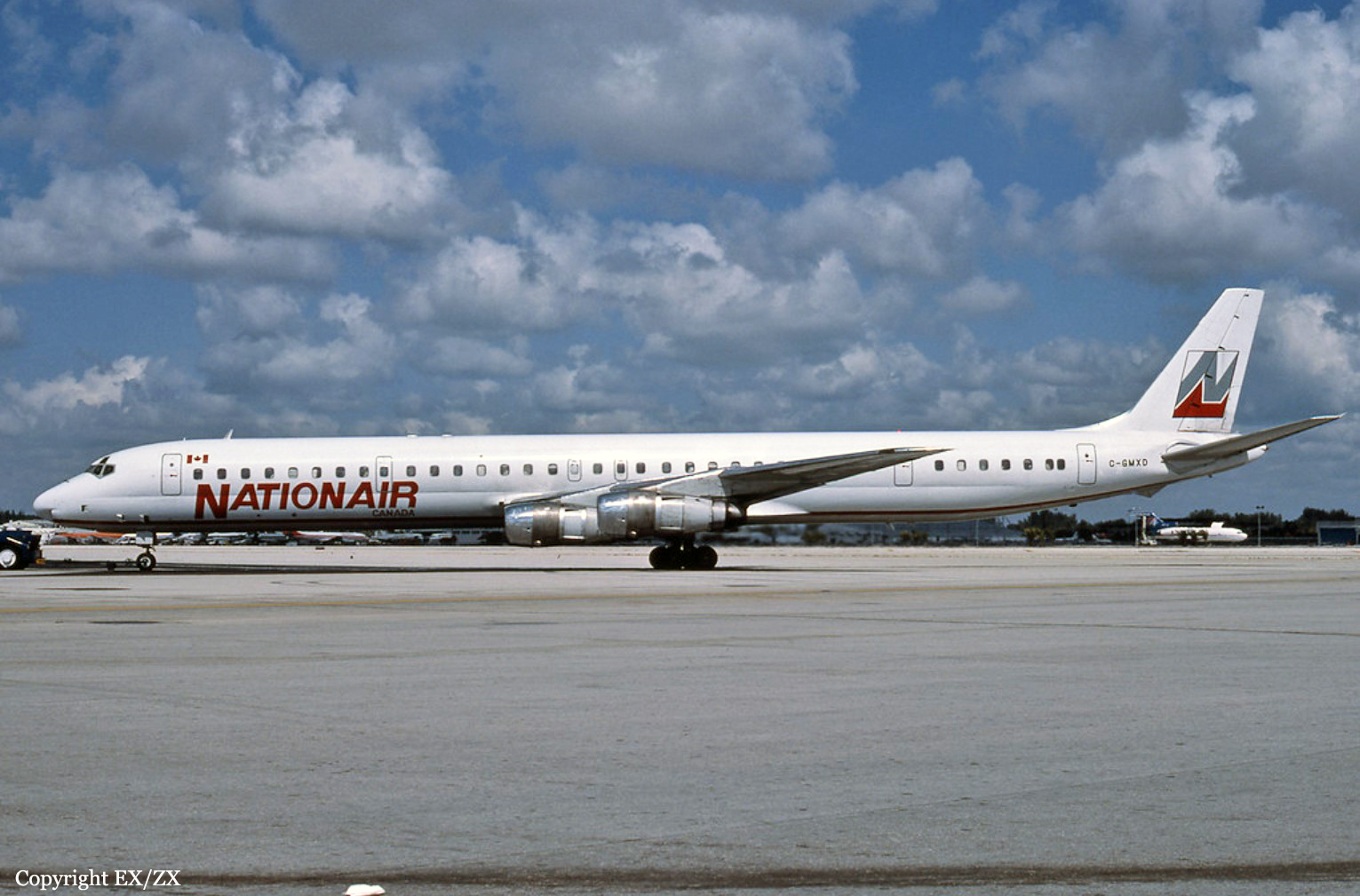
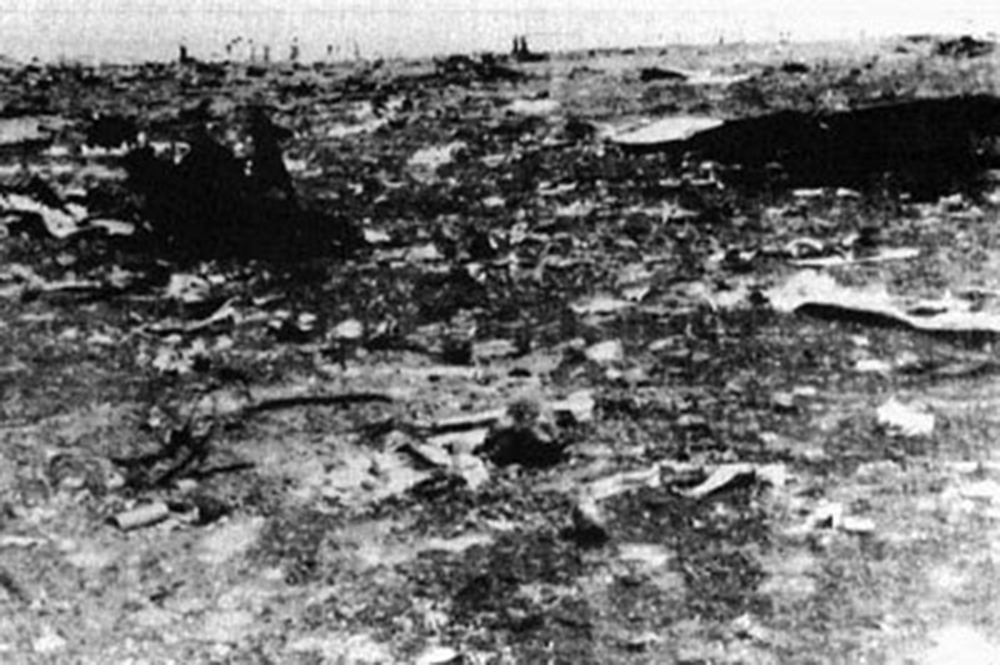
Crash of a Boeing 737-2F9 in Lagos
Date & Time:
Oct 2, 1989
Registration:
5N-ANX
Survivors:
Yes
MSN:
22772
YOM:
1982
Crew on board:
6
Crew fatalities:
Pax on board:
129
Pax fatalities:
Other fatalities:
Total fatalities:
0
Circumstances:
Following a normal approach, the aircraft landed on a wet runway and was unable to stop within the remaining distance. It overran, lost its nose gear and came to rest few dozen meters further. All 135 occupants evacuated safely and the aircraft was damaged beyond repair.
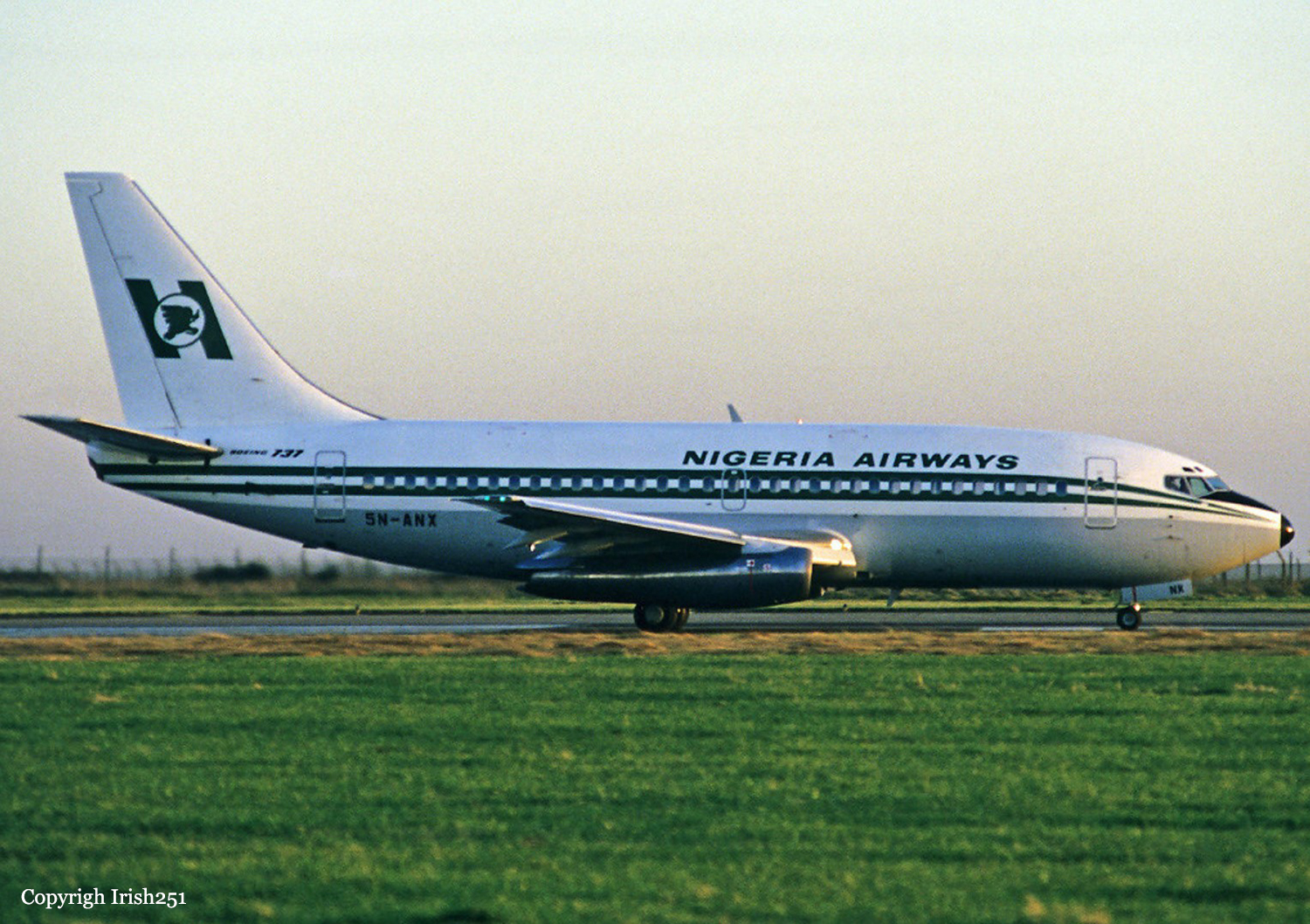
Crash of a Boeing 737-2F9 in Port Harcourt
Date & Time:
Oct 15, 1988
Registration:
5N-ANW
Survivors:
Yes
Schedule:
Jos – Port Harcourt
MSN:
22771
YOM:
1982
Crew on board:
8
Crew fatalities:
Pax on board:
124
Pax fatalities:
Other fatalities:
Total fatalities:
0
Circumstances:
The approach to Port Harcourt Airport was completed in heavy rain falls. After touchdown, the airplane encountered difficulties to stop within the remaining distance and overran. While contacting soft ground, the nose and right main gear collapsed and the aircraft came to rest. 36 occupants were injured and the aircraft was damaged beyond repair.
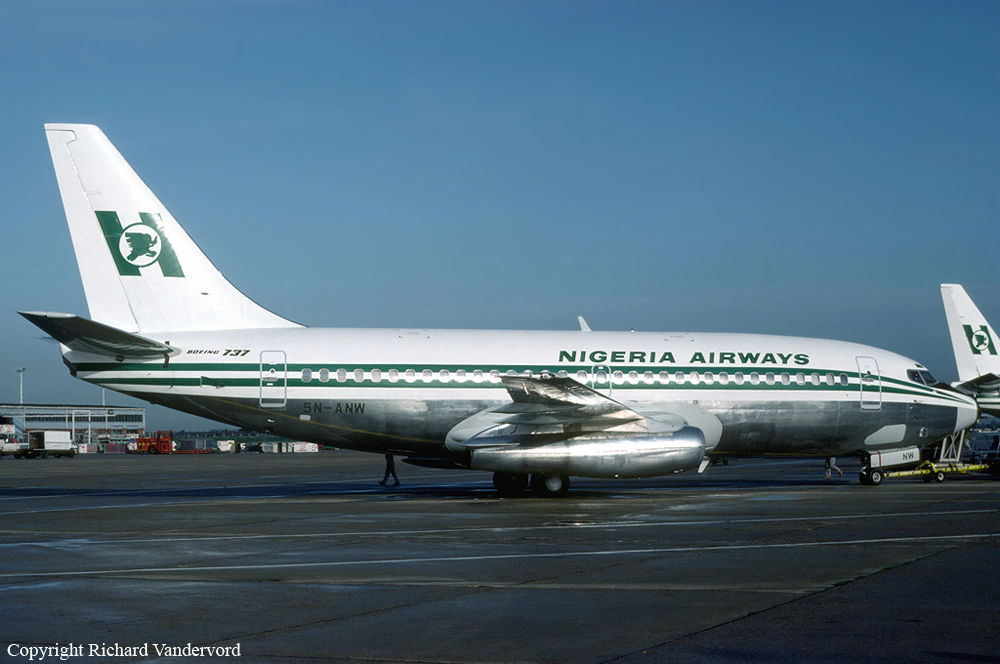
Crash of a Douglas DC-10-30 in Ilorin
Date & Time:
Jan 10, 1987 at 1350 LT
Registration:
5N-ANR
Survivors:
Yes
Schedule:
Lagos - Ilorin
MSN:
46968
YOM:
1977
Crew on board:
9
Crew fatalities:
Pax on board:
0
Pax fatalities:
Other fatalities:
Total fatalities:
0
Aircraft flight hours:
29487
Aircraft flight cycles:
8748
Circumstances:
The flight originated from Lagos, Nigeria, at 1320LT hours local time as a training flight. The training flight commenced from Lagos with the trainee Captain on the left seat as the Pilot Flying while the Instructor Captain was on the right seat as Pilot-in-Command. The point of intended landing and subsequent trainings was Ilorin Airport. Flight preparation was completed by the crew and ground dispatchers with 60.3 metric tonnes of fuel up-lift giving an estimated endurance of 8 hours. The flight was normal up till the altitude of 3,000 feet when the aircraft was inside the control zone of Ilorin Control Tower which had cleared the aircraft for a touch and go on runway 05. At 1,000 feet agl the aircraft had its landing gears in the down position and landing flaps set at 35°. At 400 feet agl the autopilot was disconnected and later at 80 feet the autothrottles were also disconnected. The aircraft was fully established on the ILS. As the trainee captain was on his very first flight on the aircraft type, the Nigeria Airways DC-10 flight transition syllabus item 9 has it that the sequence of training at this point in time should be '3 engine or single land demonstration-Full stop'. As the aircraft had already requested and cleared for a touch and go and established on ILS, it was clear that item 9 had been skipped and item 10 '3 engine Flight Director ILS approach -Touch and Go' was in progress. The trainee captain crossed the 05 threshold rather high at about 60 feet or more and a long time, interspersed with instructions by the instructor captain, was spent before the aircraft had its main landing gears on the ground at about 2,913 feet (888 m) from the threshold. Runway 05 had a Landing Distance Available if 3,100 meters. It appeared that the trainee captain did not recede the throttles fully back for the touchdown and the Instructor had to assist in doing so. The trainee captain then appeared to be holding the nosewheel off the ground and again the Instructor had to push the control column down. On nosewheel touchdown, the trainee immediately requested for takeoff power. The Instructor went into the aircraft reconfiguration procedure after the landing and was still busy on the required settings when the trainee Pilot raised an alarm as the runway threshold was approaching. The Instructor looked out into the 900m of slight haze visibility, felt that the aircraft would not takeoff with the limited runway available and immediately reached out to deploy the spoilers at the same time stepped on the brakes. Abort takeoff was not announced. At this point in time the engine throttles had already been advanced for takeoff. The aircraft was on heavy braking from about 1,390 feet (424 meters) before runway end as it overran the runway. The aircraft made significant impacts with the ILS antenna bars, electrical switch posts and the approach light support structures of runway 23 all located on the runway 05 clearway before it came to a halt. The location of the accident site was 44 meters to the left of the centreline and 649 meters along the extended centreline. A fire erupted and consumed the fuselage. All nine crew members escaped uninjured.
Probable cause:
The probable cause of the accident is primarily the amount of runway consumed in effecting the landing coupled with the lack of knowledge, with certainty of the position of the throttle levers by both the instructor and the trainee pilot in a crucial moment of deciding either to continue the takeoff or abort. The breakdown of communication and coordination between the instructor, the trainee pilot and the trainee flight engineer led to the subsequent overrun.
The following contributing factors were reported:
- The absence of uniform flight standards especially on procedures, within the Nigeria Airways Ltd. in that simulator trainings are not a progressive and logical sequence to flying the live aircraft.
- The extent of the accident was aggravated by the repeated collisions with solidly constructed approach light supporting structures which caused the fire and the shoddy performance of the airport fire services.
- The visibility was too close to the minima for a training flight.
The following contributing factors were reported:
- The absence of uniform flight standards especially on procedures, within the Nigeria Airways Ltd. in that simulator trainings are not a progressive and logical sequence to flying the live aircraft.
- The extent of the accident was aggravated by the repeated collisions with solidly constructed approach light supporting structures which caused the fire and the shoddy performance of the airport fire services.
- The visibility was too close to the minima for a training flight.
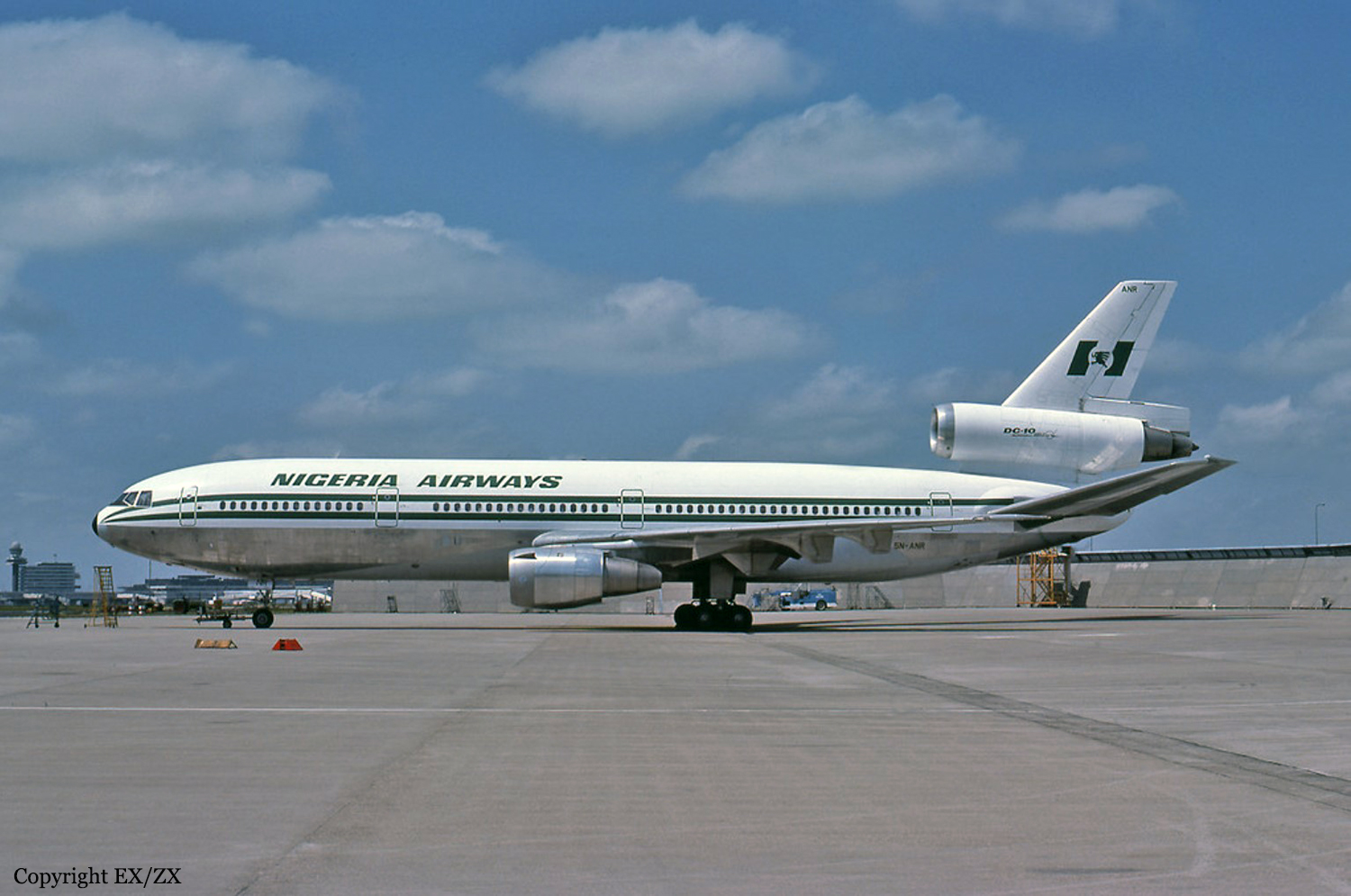
Crash of a Fokker F28 Fellowship 2000 in Enugu: 53 killed
Date & Time:
Nov 28, 1983 at 1113 LT
Registration:
5N-ANF
Survivors:
Yes
Schedule:
Calabar - Enugu
MSN:
11090
YOM:
1975
Crew on board:
6
Crew fatalities:
Pax on board:
66
Pax fatalities:
Other fatalities:
Total fatalities:
53
Aircraft flight hours:
10618
Aircraft flight cycles:
14149
Circumstances:
On final approach to Enugu Airport, the visibility was below minimums due to thick fog. The crew decided to continue the approach and descended below the MDA and below the glide until the airplane struck the ground in a relative flat attitude. Upon impact, the undercarriage were torn off and the aircraft slid on its belly for few dozen meters before coming to rest in flames about 3,3 km short of runway threshold. 53 people were killed while 19 others were seriously injured. The aircraft was destroyed.
Probable cause:
The decision of the crew to continue the approach in below-minima weather conditions until the aircraft impacted the ground. It was reported that the ILS system was unserviceable at the time of the accident.
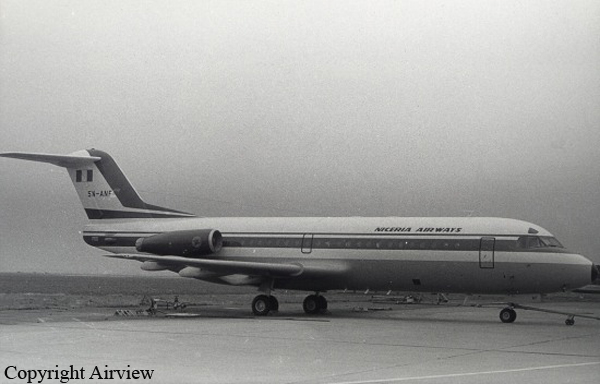
Crash of a Fokker F28 Fellowship 1000 in Kano: 16 killed
Date & Time:
Mar 2, 1978 at 1243 LT
Registration:
5N-ANA
Survivors:
No
Schedule:
Abuja - Kano
MSN:
11993
YOM:
1970
Crew on board:
5
Crew fatalities:
Pax on board:
11
Pax fatalities:
Other fatalities:
Total fatalities:
16
Aircraft flight hours:
10625
Aircraft flight cycles:
13303
Circumstances:
While descending to Kano-Mallam Aminu Kano Airport, the crew was instructed to maintain FL65 as a Nigerian Air Force MiG-21 was performing touch-and-go maneuvers at the same airport. After the jet trainer completed its touch-and-go and was taking off, its crew was informed about the approach of the F28 which should land first on runway 05. On short final, both aircraft collided and crashed in flames about 2 km short of runway threshold. Both aircraft were destroyed and all 18 occupants were killed. The exact circumstances and causes of the in-flight collision are unclear.
Crash of a Fokker F27 Friendship 200 in Sokoto
Date & Time:
Apr 25, 1977
Registration:
5N-AAW
Survivors:
Yes
MSN:
10217
YOM:
1963
Crew on board:
4
Crew fatalities:
Pax on board:
19
Pax fatalities:
Other fatalities:
Total fatalities:
0
Aircraft flight hours:
21060
Aircraft flight cycles:
22167
Circumstances:
After landing, the airplane was unable to stop within the remaining distance. It overran and came to a halt few dozen meters further. While all 23 occupants escaped uninjured, the aircraft was damaged beyond repair.
